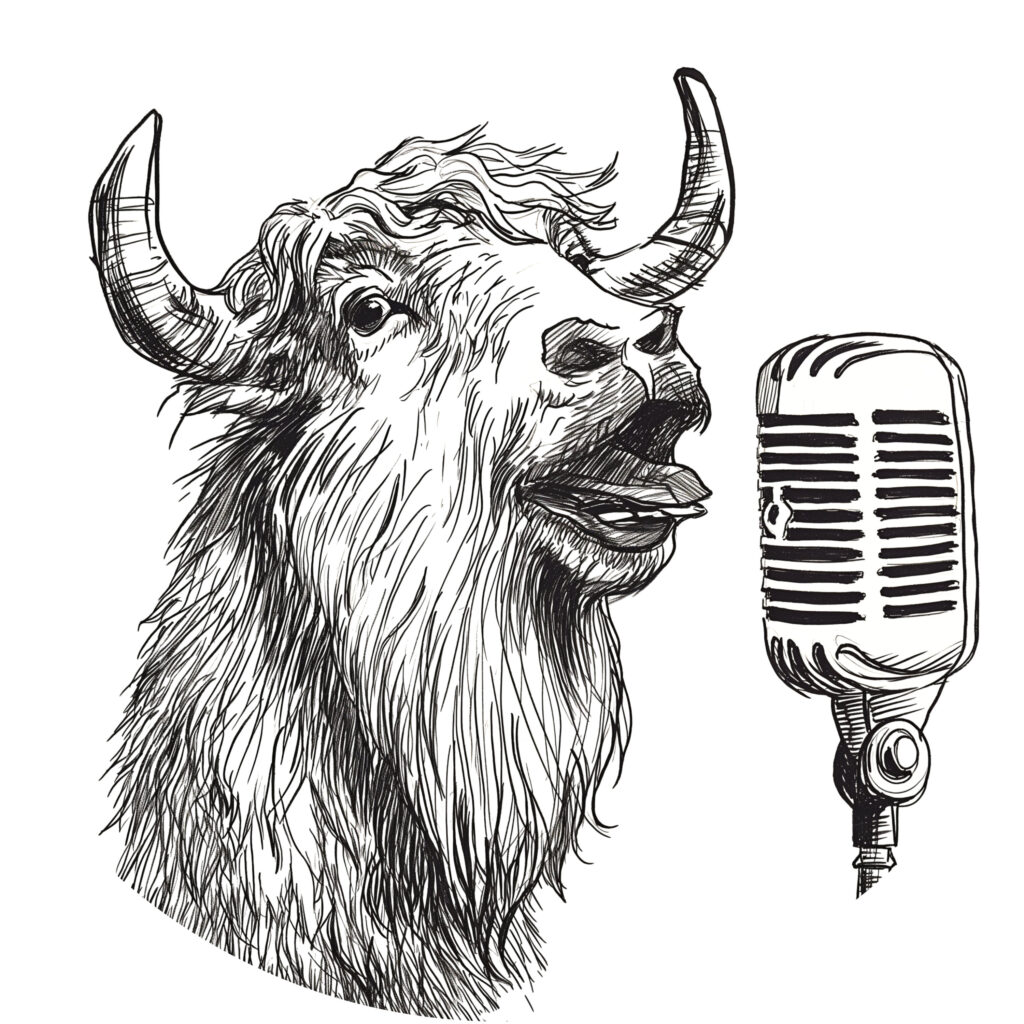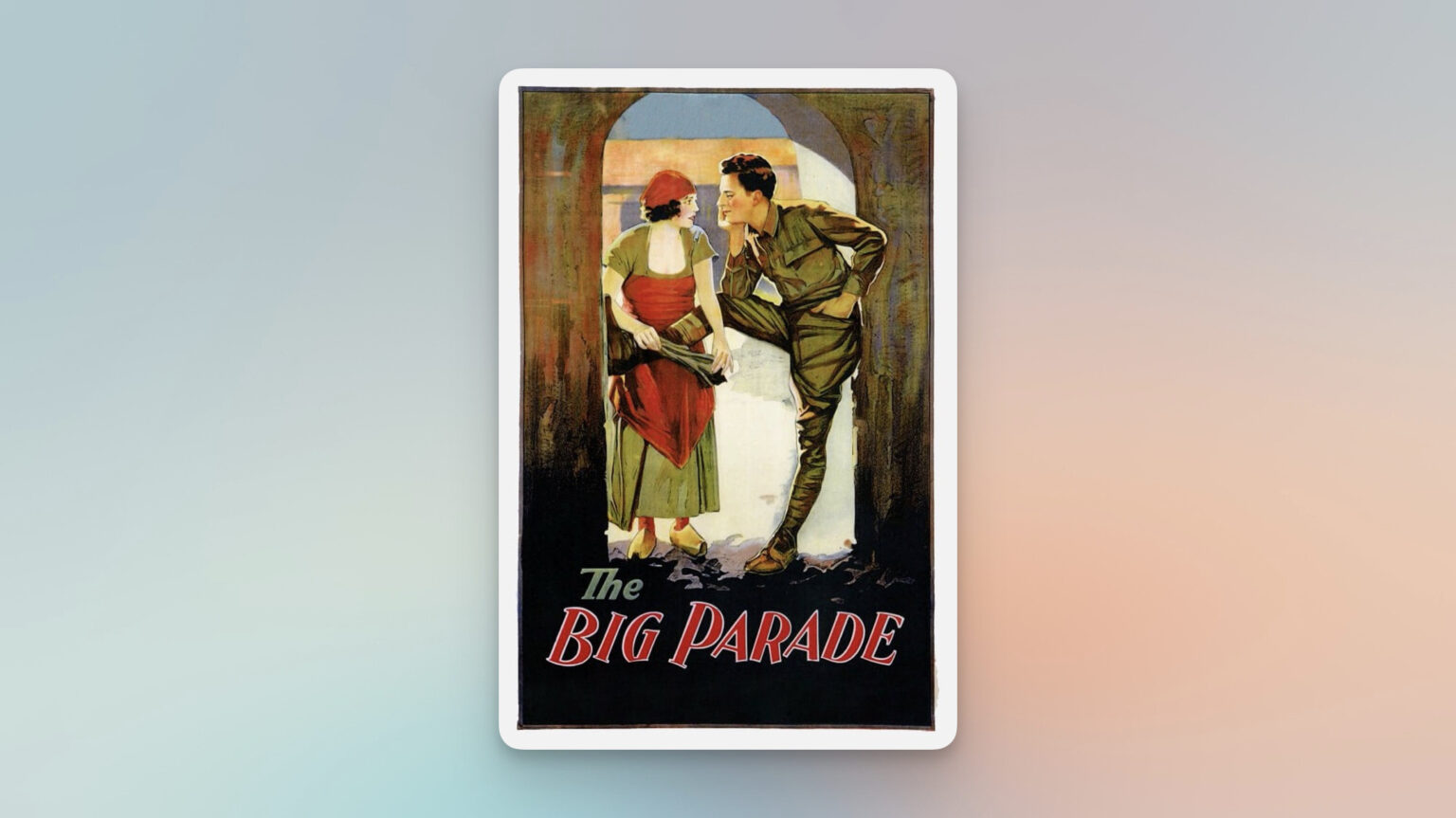King Vidor’s The Big Parade is one of those silent-era epics whose reputation has outlived its contemporaries—not because it’s loud or patriotic or triumphalist, but because it’s patient, humane, and unexpectedly honest about what war does to the ordinary human body.
And what it does is profoundly unkind.
Released in 1925, less than a decade after the armistice, it comes from a moment when the world was still suturing its wounds and the cultural mythology of World War I was not yet fixed. You can feel the urgency of remembrance, the unease, the unspoken anger, the unsettled sense that no one had yet figured out how to talk about what had just happened.
Historically, the U.S. had been late to the war and deeply reluctant to join it. The first “big parade”—the one that swept young men like Jim Apperson off their porches and into the Army—was fueled more by social pressure and propaganda than by national necessity. The film captures that flush of naïve enthusiasm remarkably well: a nation swept up in drums and bunting, sending boys who had never seen Europe into trenches already slick with years of bloodshed. I get the sense that Vidor (and MGM) knew this was the cultural memory they were speaking to, an audience still reckoning with the fact that America’s great crusade had ended not in glory but in a generation of maimed veterans and fractured families.
For all its historical weight, the film’s first hour and a quarter is… well, it’s a lot of French countryside. And washing troughs. And chewing gum flirtation. And soldierly horseplay. Andy disagrees with me on this on the show, but I have to say that this is where the movie nearly loses me. There is genuine charm in the courtship between John Gilbert’s Jim and Renée Adorée’s Melisande, and important groundwork is laid here… the boredom of green troops waiting for orders, the way routine becomes a refuge before the storm. But the pacing feels indulgent, the rustic bliss stretched far beyond what the film needs. Vidor believed in letting scenes breathe—to the point that they drift. I appreciate the intent. I’m still checking my watch.
But then the second half arrives, and suddenly The Big Paradebecomes the film its reputation promises.
When Jim’s unit finally moves to the front, the tone shifts with precision and severity. The extended march into Belleau Wood—done in slow, inexorable rhythm, each step a beat in some unseen metronome—is one of the greatest sequences in silent cinema. Combat had rarely been filmed with this kind of dread before: no triumphant charges, no patriotic crescendos, just men plodding forward into a mechanical killing field. One by one, characters we’ve come to know fall out of the frame, and Vidor refuses dramatic punctuation. There are no heroic deaths here—only the brutal, indifferent logic of freshly-industrialized warfare.
The Big Parade isn’t interpreting the war through myth; it’s still too close for that. It’s a movie made by a studio full of veterans and bereaved families, directed by a man who considered this his own attempt at national catharsis. The realism was radical for its time—no surprise that later anti-war films, from All Quiet on the Western Front to Paths of Glory, draw directly from its DNA.
The emotional climax arrives in intimacy: Jim wounded, trapped with a dying enemy soldier, confronting the shared humanity of someone he has been ordered to hate. In a film that began with drums and cheering, this quiet encounter feels like the truth finally breaking through the pageantry.
By the time Jim returns home, amputated and hollowed out, The Big Parade has fully transformed from a patriotic adventure to a meditation on trauma—a story about what happens to a naïve young man when a nation’s rhetoric collides with the body’s reality. The final scenes, where he struggles to reconnect with civilian life and ultimately returns to France to seek Melisande, acknowledge that healing after a war this devastating must happen slowly, and often far from home.
If the film were as lean in its first hour as it is devastating in its second, it would be a masterpiece without qualifications. But even with the exhausted French pastoral stretch, The Big Parade remains one of the essential war films—a movie that helped invent the grammar of battlefield realism and still carries the weight of a world trying to understand what it has done.

